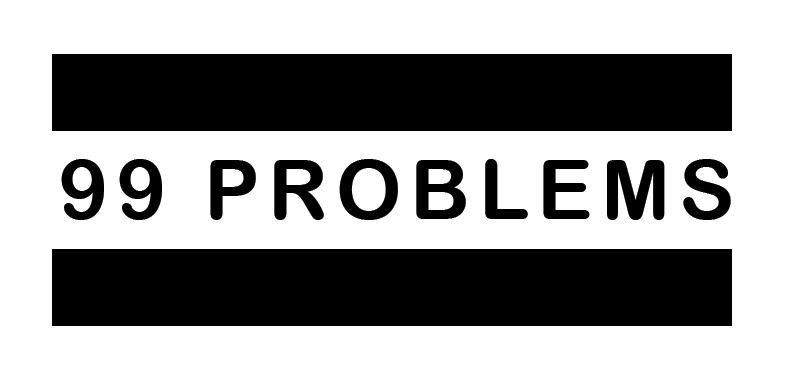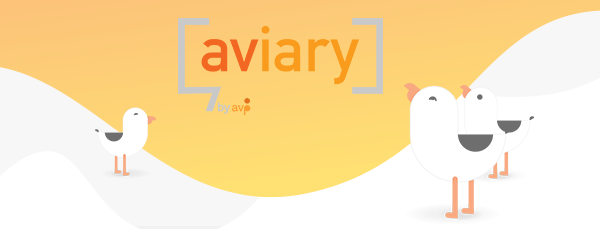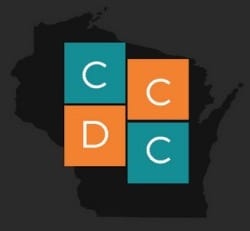Ignite

Welcome to AVP’s very first post in our 99 Problems series! This series focuses on the problems of current generation streaming platforms that are solved by Aviary, AVP’s next-generation platform for streaming audio and video content. (Did that sentence make you roll your eyes? Start here). Otherwise, if you are ready to dive in, let’s go!
The Production and Consumption of Text as Information
The point of this post will be to focus in on audiovisual content, but before we get to that, let’s talk about text because it serves as a useful reference point for comparing and contrasting. Since ancient times people have written things down and consumed written information under two primary paradigms:
- Entertainment-oriented: Writing as a form of expression and consumption of entertainment.
- Information-oriented: Writing as a form of documentation and consumption of information.
It is not to say that there can’t be some overlap between the two, either on the production or consumption side, but for the purpose of this conversation let’s use these two terms to speak broadly about these two paradigms. Let’s also focus on the consumption side of things and refer to these as an entertainment-oriented experience and an information-oriented experience. In other words, let’s look at this from the perspective of the consumer of content and what their intended experience is – to be entertained or to gather information.
Without getting into an arcane history of text or search, let’s look at a crude listing of some salient facts in rough chronological order:
- Humans made marks on all manner of objects and materials
- Text was written by hand on paper
- Text was typed on paper
- Text was typed and saved as digital information
- Full-text search emerged that allowed people to retrieve the exact words they wanted to find within a digital document
- Full-text search evolved, allowing people to find the exact words they wanted across a boundless number of repositories of text in all different formats
The emergence of full-text search transformed the consumption of text, and most significantly impacted the information-oriented experience.
In the entertainment-oriented experience we are consuming every word for the purpose of enjoyment. Search and navigation of this same text may become useful when we are performing certain tasks, but this use of the text would fall under an information-oriented experience. For instance, when we are at the library or online trying to find the next book we’re going to read, or we are looking for a specific piece of text to share with someone else, or there is scholarly work taking place.
Today it’s hard to imagine a time when we were not able to hit Command/Ctrl-F within a PDF or Word doc, or search instantly across documents on your computer or server, or Google things. Seriously, try for a minute to imagine what your life would be like without this functionality. This is a deeply ingrained user expectation today for text in all file formats and forms, regardless of whether it’s a book or a newspaper or a report or a website or meeting minutes or… you get the picture. EVERYTHING. We do not give an inkling of thought to the miracle of being able to search in a comprehensive and limitless way with little effort all day long, every day of our lives.
The Production and Consumption of AV as Information
Now, without getting into an arcane history of AV or search, let’s look at a crude listing of some salient facts in rough chronological order:
- AV was recorded on analog media of various sorts with increasing sophistication and quality over time
- AV was recorded and saved as digital information on physical digital media (e.g., CD, DVD, DAT, Digital Betacam)
- AV was recorded and saved as digital files on hard drives (e.g., .avi, .wav, .mov, .mp3)
- The internet allowed people to consume AV online with incremental levels of increasing sophistication in search and organization based on a small amount of metadata (e.g., title, director, producer, actor, date published, genre)
AV still exists in a pre-full-text world. Why is that? For as long as AV has been produced and consumed, it has been done for both entertainment and information reasons. The information-oriented experience with AV is equally as valid as the information-oriented experience with text. AV is news, lectures, presentations, meetings, the study of music, and… you get the picture. EVERYTHING. It is not just movies, television, commercial music, and other forms of entertainment. There are many billions of hours of recorded AV and a vast majority of it is not entertainment. In the same way that people have a need to search across their computers and servers and the web, across all file formats and all types of text, people have the need to search for AV.
However, every current-generation, widely available streaming platform* in existence gives users about 5-10 paltry fields of metadata on which we can search. The most common user experience when using AV in an information-oriented experience is not a quick Command/Ctrl-F that takes you right to the point of interest. It is clumsily jumping and skipping around the timeline of an audio or video recording hoping that you get lucky and find the right spot and that you aren’t missing something important. Or spending inordinate amounts of time listening/watching in faster-than-real-time to many hours. And forget the idea of even searching across millions of hours, across multiple types, file formats, and sources**. That’s not even a thought.
[Read more]
Welcome to AVP’s very first post in the series, How To Aviary! This series of quick insights and videos will introduce you to the basics of Aviary, AVP’s next-generation platform for streaming audio and video content. (Did that sentence make you roll your eyes? Start here). Otherwise, if you are ready to dive right in, let’s begin with what it means to subscribe to Aviary.
[Read more]

[Read more]
AVP is pleased to announce our participation in the RIPDASA Project. The Ibero American Network for Digital Preservation of Audio and Audiovisual Archives (RIPDASA, by its Spanish acronym) is a four-year project supported by the Ibero American Program of Science and Technology for Development (CYTED, by its Spanish acronym). RIPDASA aims to support and develop research and training on digital preservation in the region.
[Read more]
These are recordings of the AVP webinar series in Spanish given on the topic of Digital Preservation. Read more here.
If you have audiovisual assets in your collections, chances are you’ve heard the news: all your AV will self-combust by 2028.
[Read more]
Registrations are open for the fourth session of the AVP Webinar Series focused on Digital Preservation. In this opportunity, Miquel Térmens, Dean of the School of Libraries and Documentation of Universidad de Barcelona and author of “Preservación Digital” (Barcelona, Editorial UOC, 2014), joins our consultant Pamela Vízner to talk about different approaches and methodologies for the selection of digital preservation systems based on their experience. This webinar will be 60 minutes long, followed by Q&A.
[Read more]
The Fortunoff Video Archive for Holocaust Testimonies adopts Aviary, allowing their users to search 12,000 hours of video content in seconds
BROOKLYN, N.Y., Jan. 22, 2019 /PRNewswire/ — AVP, a software development firm focused on maximizing the usability of data, today announced Aviary, a new, cloud-based platform for publishing searchable audio and video content. With the new platform:
[Read more]
 During summer 2018, Kristina Warner, a student from the UW–Madison iSchool who was partnered with Outagamie Waupaca Library System (OWLS), Wisconsin, created two How-To user guides for Exactly and Fixity. These guides are now publicly available on the Curating Community Digital Collections (CCDC) site. Thanks to Kristina for putting the guides together!
During summer 2018, Kristina Warner, a student from the UW–Madison iSchool who was partnered with Outagamie Waupaca Library System (OWLS), Wisconsin, created two How-To user guides for Exactly and Fixity. These guides are now publicly available on the Curating Community Digital Collections (CCDC) site. Thanks to Kristina for putting the guides together!
[Read more]

{{cta(’66e6eb49-8d08-4477-888c-d28a4a44d8a4′)}}
Because all of you let us into your lives in a very real way, we’ve created this card to offer you a sneak peek into the reality that underlies the annual creation of the AVP holiday card.
[Read more]
« Previous Page — Next Page »


 During summer 2018, Kristina Warner, a student from the UW–Madison iSchool who was partnered with Outagamie Waupaca Library System (OWLS), Wisconsin, created two How-To user guides for Exactly and Fixity. These guides are now publicly available on the
During summer 2018, Kristina Warner, a student from the UW–Madison iSchool who was partnered with Outagamie Waupaca Library System (OWLS), Wisconsin, created two How-To user guides for Exactly and Fixity. These guides are now publicly available on the 